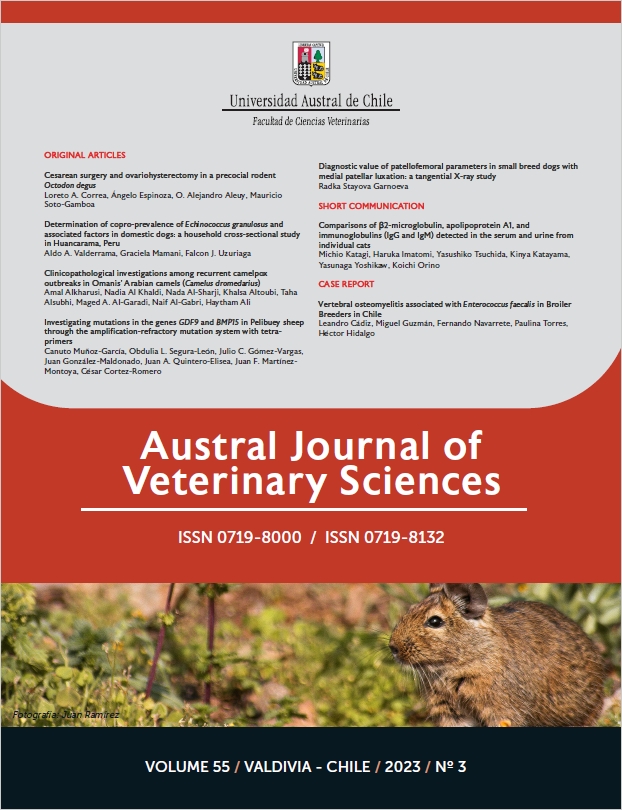Diagnostic value of patellofemoral parameters in small breed dogs with medial patellar luxation: a tangential X-ray study
Main Article Content
Abstract
Knowing the diagnostic value of radiological patellofemoral parameters is important for evaluating the status of small-breed dogs with medial patellar luxation (MPL). This retrospective survey was conducted in four small dog breeds (Mini Pinscher, Pomeranian, Chihuahua, and Yorkshire terrier) on 46 healthy stifle joints and 72 joints with grade II and III MPL. The following morphometric parameters were measured on tangential radiographs: trochlear sulcus angle, lateral and medial trochlear inclination angles, trochlear depth, horizontal and vertical patellar diameters, length of the lateral and medial patellar facets, lateral and medial facet angles, Wiberg angle, congruence angle, and axial linear patellar displacement. Receiver operating characteristic (ROC) analysis was performed to evaluate the cut-off values, sensitivity, and specificity of the parameters associated with MPL. The trochlear sulcus angle and trochlear depth were capable of consistently identifying the MPL-affected joints (AUCs > 0.9). The parameters describing the position of the patella within the trochlear groove (congruence angle and axial linear patellar displacement) were found to be the most accurate, with an AUC of over 0.990 and a sensitivity/specificity of over 94%. The patellar morphology parameters had no diagnostic value in distinguishing between healthy and MPL stifles.


 https://orcid.org/0000-0002-3373-3468
https://orcid.org/0000-0002-3373-3468